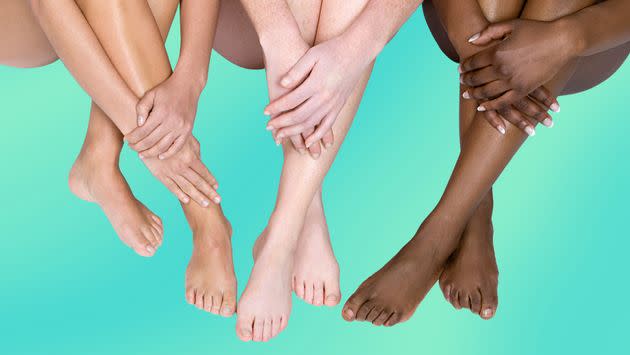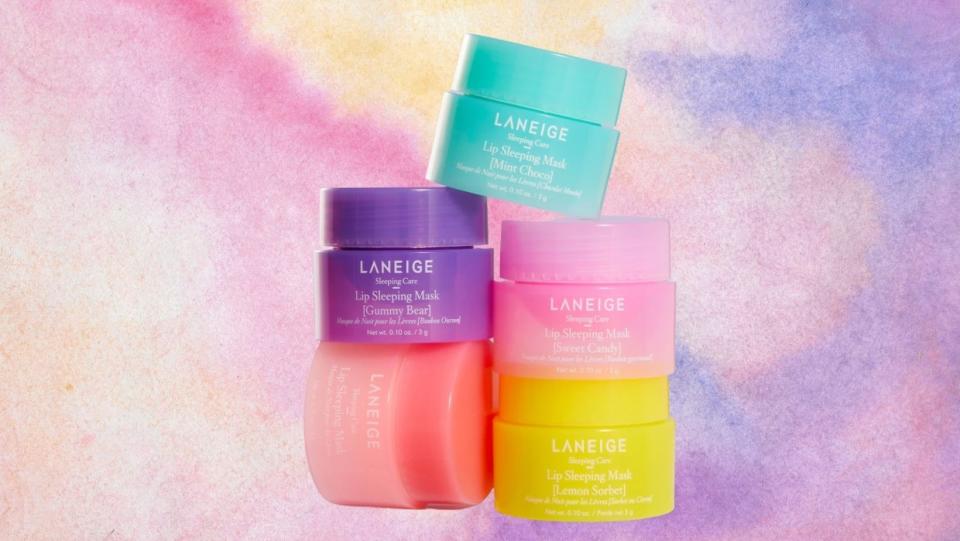Do You Really Need Special Moisturizers For Different Body Parts?

Tubes of eye creams. Pots of hand creams. Special jars of “foot-only” lotions. If you’re making an effort to keep your skin moisturized all over, you’ve probably got several products for different body parts sitting around. After a while, it’s not hard to feel overwhelmed by this specificity. Is left earlobe cream, followed by right earlobe cream, going to be the next hot product on the skin care market?
We talked to experts to find out which creams ought to go where, and to learn if it’s OK to put hand lotion on your feet, or foot cream on your elbows. Here’s what they said.
News flash: All skin is not the same.
While skin is often referred to as one singular organ, it actually has what you might think of as “microclimates” that do, in fact, require specialized attention. You may encounter differences of opinion about just how many of those areas there are, but in general, using at least a few different formulations makes sense to the experts.
“The skin on different parts of the body can have different characteristics and needs,” dermatologistShadi Kourosh told HuffPost. “It all depends on the problems you are trying to solve.”
When it comes to skin cream, “one size does not fit all,” dermatologistHope Mitchell said. And there’s a good reason for that, she said: “Skin on the eyelids, cheeks and legs are the thinnest, to allow for better flexibility. Skin on the palms, soles and elbows is the thickest, which helps prevent damage from frequent use.”
What’s in all those different products?
“There are three basic categories of ingredients for moisturizers — humectants, emollients and occlusives,” dermatologistJennifer David said.
“Humectants are water-grabbing ingredients that help the skin maintain a healthy moisture level and a supple feel,” David explained. Humectants include glycerin, hyaluronic acid, lactic acid and glycols. “They can be used all over, but they’re particularly helpful for the thinner areas around the eyes, neck, chest and backs of hands,” David said.
“Emollients are oil-based substances that fill in the rough patches to give it an instantly smooth feeling,” she continued. Look for ingredients like coconut oil, squalene, lanolin and caprylic/capric triglyceride. “They’re great for any area of the body, especially in cold, dry weather.”
“Occlusives, which appear on labels as petrolatum, waxes, butters and heavy silicones, seal everything inside a water-resistant barrier,” David said. ”In a balm, they’re great for extremely dry patches of skin, plus the hands and feet, but they should be avoided on acne-prone skin.”
Once you understand those ingredients, you can do a little more label reading, David suggested. “You want to know if you’re using a lotion, which is lighter and better for warm climates, or a cream, which is heavier and better for colder and drier climates. Typically, a lotion contains more water-soluble humectants, and a cream-based moisturizer contains more occlusives, with emollients as the primary moisturizer.”
Here are the body parts for which you may want a special product.
“Skin care companies would like you to believe that each body part needs a different cream or moisturizer, because that can sell more products from their lines,” plastic surgeon Troy Pittman said. “While some areas of the body have thinner skin or tend to be oilier or drier, you don’t need to purchase a different product for every part of the body. For example, you can apply the same product to the legs, elbows, arms, feet and abdomen.”
Pittman calls out the face and neck as two areas that do require specially formulated products. “That’s because the skin there is not as thick or tough, and it’s more exposed to the sun. In addition, you make expressions with your face, so that causes more wear and tear there.”
“Generally speaking, one cream can be used on most body parts,” Joshua Zeichner, a dermatologist and associate professor of dermatology at Mount Sinai Hospital, told HuffPost. “The only exception that I generally make is for the eyes. The skin around the eyes is among the thinnest and most sensitive of the body. Many eye creams that contain potentially irritating ingredients are formulated with lower concentrations to make them more tolerable in this area.”
But wait, there’s at least one more area for specialized attention, say the experts: “Lips really require their own products,” David said. “Not only is the epidermis much thinner there, but it also lacks sebaceous glands and pigment. Petrolatum and other heavy occlusives help protect the skin from the elements. Also, since the skin on the lips generally lacks melanin, consider a lip balm with SPF.”
Save money with these expert tips.
“My all-time favorite, all-over skin care product isVaseline Petroleum Jelly,” Zeichner said. “It’s a jack-of-all-trades and can be used on almost all body parts, ranging from the lips to the eyelids to the bottoms of your feet.”
”For the most part, you can divide products into face and body creams,” Cheri Frey, a dermatologist and assistant clinical professor of dermatology at Howard University, said. “What you put on your back, you can generally use on your arms. My recommendation is that if you have problems like keratosis pilaris, which is rough, bumpy skin, use a body moisturizer all over, then apply a special cream to spot-treat those problem areas.”
With the high cost of many products, it’s important to keep the pricey stuff where it will do the most good, Michelle Wong, chemistry Ph.D. and founder of Lab Muffin Beauty Science, said. “Face products are designed to be spread over a small area, while body products are designed to spread over a larger area,” she said. “You may want to save an expensive product with more beneficial ingredients for smaller areas.”
Here are some of the experts’ favorites for both all-over and body-part-specific use:
HuffPost may receive a share from purchases made via links on this page. Every item is independently selected by the HuffPost Shopping team. Prices and availability are subject to change.
This article originally appeared on HuffPost and has been updated.



